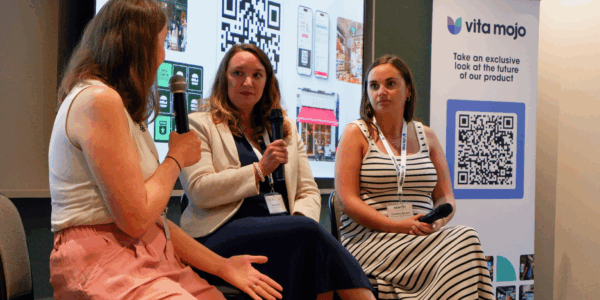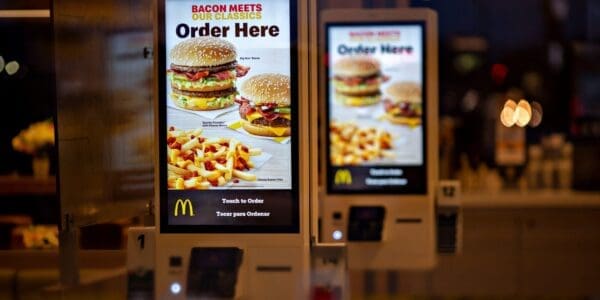However, as an operator of a fair few years and CEO of a business that’s all about using data for better marketing, customer engagement, and, well, profits… if customer data flows seamlessly through an ecosystem, then I’m happy (and I know my clients are too).
A Bit of Background
Hospitality is seriously behind retail when it comes to customer data. It always has been, and ecommerce businesses have widened that gap further. At Airship, we are working to close it.
Airship has always prided itself on integration, from back in 2011 when Revolution Bars were rolling out their first native app, PartyPro platform for pre-booked sales and WiFi splash pages for data collection, Even then, Airship was all about collaboration; we developed open API’s first then built our platform on them. Today, we have nearly 40 different partners connected to us around 15 data touch points which are:
Campaign / Feedback / Booking / Occasion / Single-Use Vouchers / Wifi / Basket / Gifting / Room Booking / Loyalty / Tickets / Kiosk / Click & Collect / Order & Pay at Table / Track and Trace
There’s Always Been a Problem…
- Until around 2010 there was a real reluctance from EPOS houses to share data with clients or third party suppliers. It was very much a ‘Gollum’ approach to giving away the precious ring. Data was Intellectual Property (IP) and frankly there wasn’t enough money available outside of the larger operators to allow for much innovation.
- In the early years massive amounts of money were thrown at tech solutions, with integrations rife (think Flypay), which failed to gain traction as consumers were simply not ready. The EPOS houses, burnt by this deluge of empty promises, have been hesitant to engage with new tech ever since.
- Getting meaningful data coverage through app-based loyalty programs has been impossible to make work outside of the coffee sector, simply due to the frequency of purchase. When your only channel is dine-in and the frequency of visits is 3 times a year, you’re going to struggle with an APP, no matter the number of gimmicks. So many have tried (and failed), it’s a lesson that has simply not been learnt.
Ultimately, this has always been the sticking point: how do we get enough data into our CRM to get the level of insight needed to meaningfully move the dial on sales across all channels?
It Might Take a Pandemic
In every crisis, entrepreneurship shines through. This was never more true than in Covid-19: businesses have had to adapt incredibly quickly. The furlough scheme saw whole companies put out to graze, with boards of directors and founders freed up to be entrepreneurs: to innovate and pivot unencumbered by noise from operations, marketing, IT and finance.Technology companies have been utterly swamped as decisions which were on a 5 year roadmap were made in a matter of weeks. contracts have been signed in record time and there’s been a ton of new tech entrants.
This is a pivotal point for Hospitality. All of a sudden there is an urgent need to get in front of the customer as often as possible and every avenue is being pursued. Naysayers around delivery, click and collect, and DIY home kits are thinking again after seeing Pizza Pilgrims, Cote, Rudy’s and a ton of others successfully bring their brands into peoples homes. They might not have replaced all of the revenue lost, however they are maintaining brand position for the future. I’ve read that in some age groups, technology has pulled people forward 5 years, my mother for instance finally got internet banking and placed her first orders online (otherwise she’d have run out of wine).
What we’ve ended up with is a whole load of new digital channels to engage customers with, combined with increased customer willingness (or obligation) to use those channels, which means that for the first time, digital interactions are at a volume where they can provide truly meaningful insight, and to move that dial.
Getting it Right
Since I first met Vita Mojo around a year ago, I was impressed with their UX and in general with their approach to the consumer. The innovation of a single operating system across POS, Kiosk, Click & Collect, Delivery and Order & Pay makes absolute sense to me, technology focussed around the customer experience… feels a bit like ecommerce.
Just prior to lockdown, Vita Mojo integrated with us for our shared client Leon. This integration meant we could have Smart Order Data coming straight through from customers, including personal contact information, visit data (date/time/location) and, importantly, basket data. The next stage was to integrate with our Single-Use Voucher API to track the effectiveness of promotional campaigns and customer journeys. All this means that all our shared clients (Boston Tea Party, Leon, Tonkotsu, to name a few) can now benefit from a complete, closed-loop marketing journey. Vita Mojo and Airship additionally integrate with Yumpingo and other feedback platforms to measure customer sentiment connected to the transaction.
The final piece of this jigsaw comes with Toggle, the integration with which is due out this month, and will allow customers to redeem gift cards and experiences via the Vita Mojo platform across Kiosks, Order & Pay and Click & Collect.
To summarise, by the end of September our clients will have a single integrated system which provides customers’ visit value, expected lifetime value, visit frequency, NPS and purchase habits, as well as driving up visit frequency with our Proof of Presence (PoP) Metrics. With all the additional sales channels enabled by Vita Mojo, we’ll understand a large percentage of customer engagement and enable our clients to really move that dial.
A Final Word of Warning
My conclusion here will be nothing new for those that know me, and given the opportunity I will always gladly repeat it: if you are looking for a technology partner for any aspect of your business, choose one that integrates. Connected platforms drive operational efficiency on a level that a standalone bit of tech just never will. Joining the technological dots will enable you to truly leverage all of your channels for a single, comprehensive view of your customer and your business. And, you guessed it, move that dial on your sales.
Don’t buy platforms that don’t integrate, you’ll regret it.
Guest blog by Dan Brookman, CEO of Airship and Toggle


